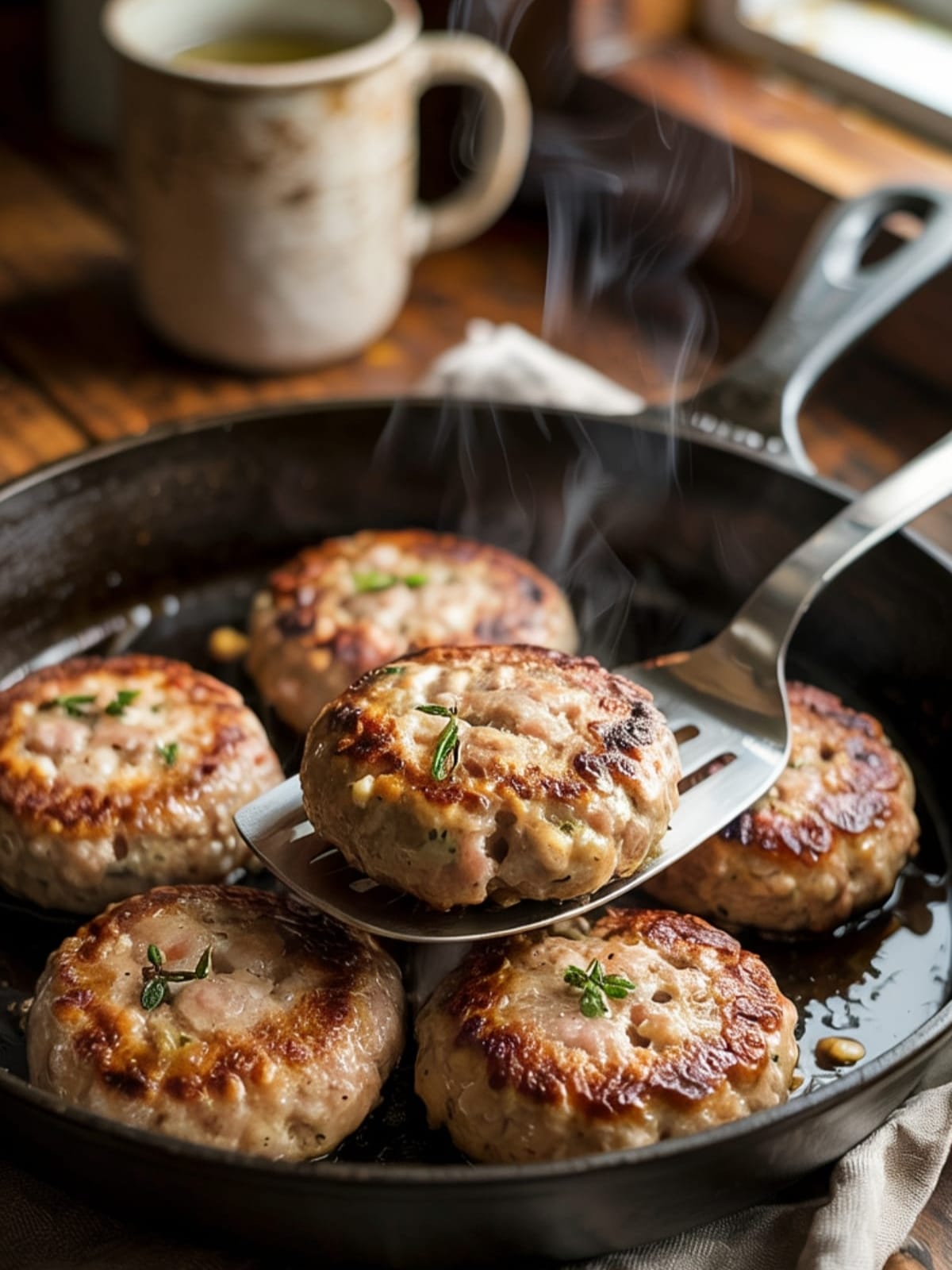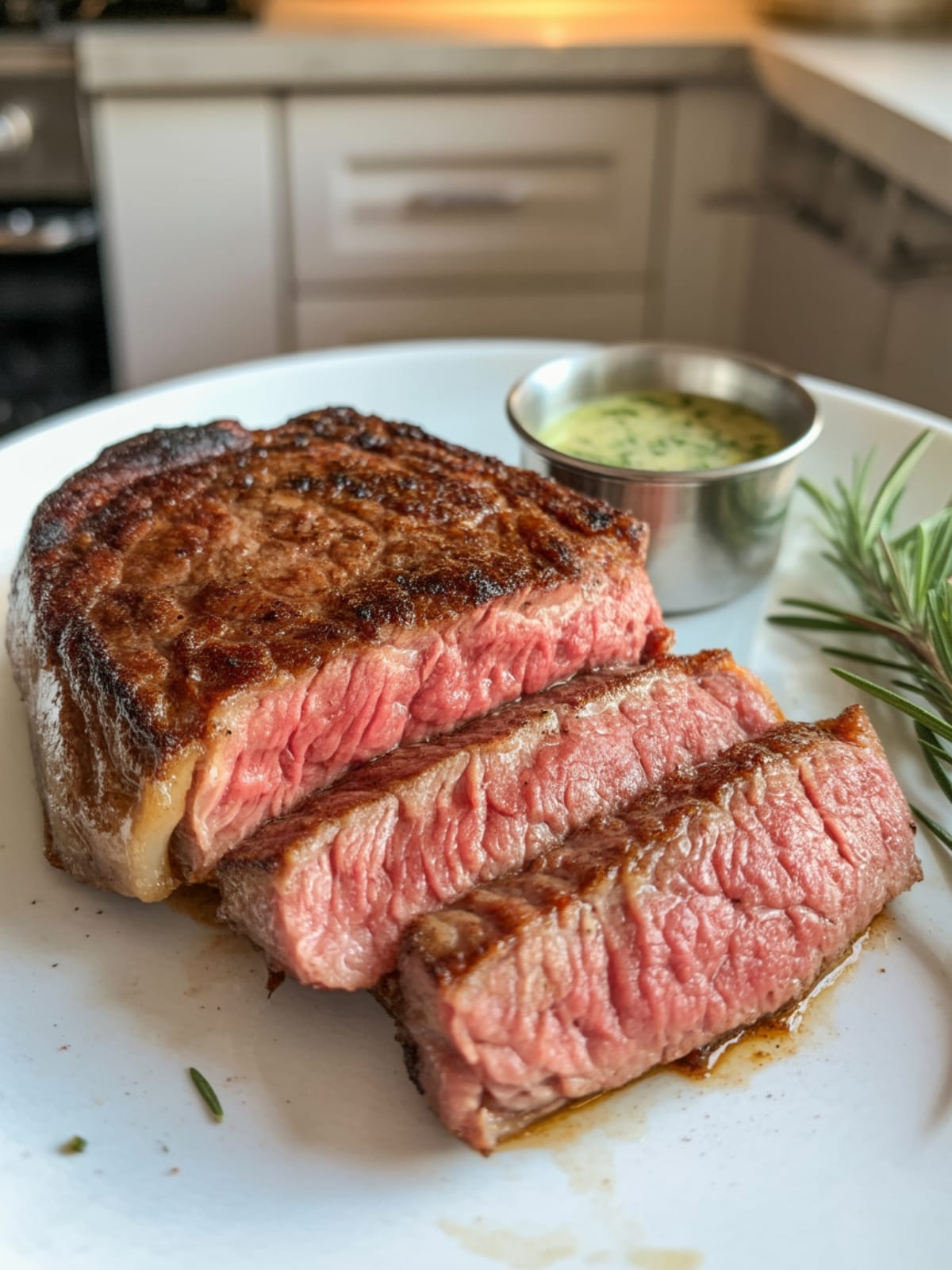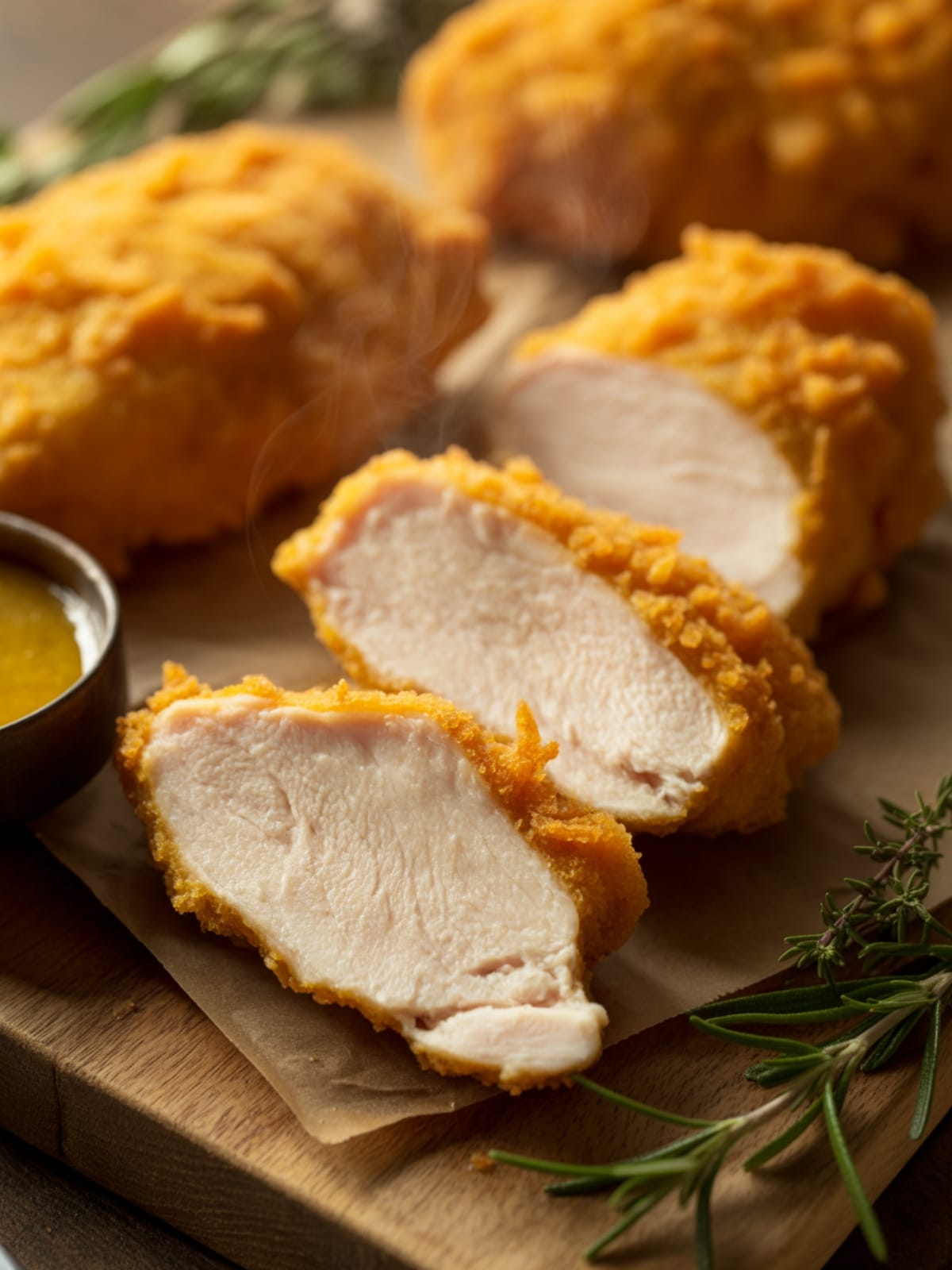Ever bitten into a restaurant breakfast sausage and thought, “Why does this taste so much better than what I make at home?” That’s because you’ve been buying those sad, pre-frozen hockey pucks masquerading as sausage. It’s time to elevate your breakfast game with homemade breakfast sausage patties that’ll make your kitchen smell better than any candle Yankee ever dreamed up.
Why This Recipe is Awesome
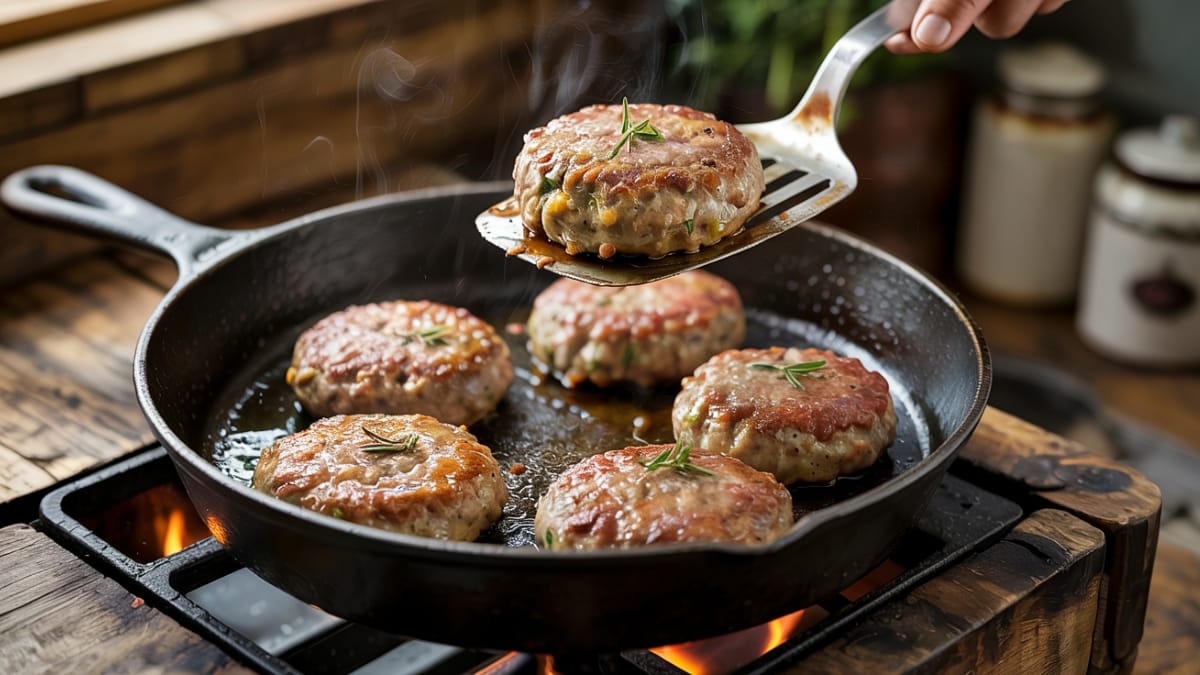
Let’s talk about why making your own breakfast sausage is worth the minimal effort. First off, you control exactly what goes into it. No mysterious “natural flavors,” no preservatives with names longer than your grocery list, and no pink salt #4 or whatever they’re putting in processed meats these days.
But the real magic is in the flavor customization. Too many commercial breakfast sausages are one-note wonders – either bland as cardboard or so aggressively sage-flavored you feel like you’re chewing on a Christmas wreath. With homemade patties, you’re the flavor boss. Want it spicier? Add more red pepper flakes. Prefer a maple undertone? Drizzle in some pure maple syrup. It’s your breakfast kingdom.
Plus, there’s something deeply satisfying about saying “Oh, these sausages? I made them from scratch,” when someone inevitably asks why your breakfast tastes so darn good. Not that I’m suggesting you make sausage just to show off… but I’m not NOT suggesting it either.
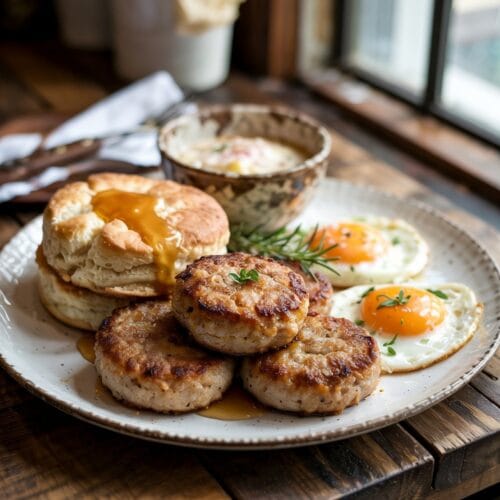
Homemade Breakfast Sausage Patties
Ingredients
- 2 pounds ground pork around 80% lean for best flavor
- 2 teaspoons dried sage
- 2 teaspoons kosher salt
- 1 teaspoon freshly ground black pepper
- 1/2 teaspoon dried thyme
- 1/2 teaspoon dried rosemary finely chopped (or crushed)
- 1 tablespoon light brown sugar
- 1/4 teaspoon red pepper flakes more if you like heat
- 1/4 teaspoon ground nutmeg
- 1/8 teaspoon ground cloves
- 1 tablespoon maple syrup optional, but highly recommended
- 1 tablespoon ice water
- 1 tablespoon vegetable oil for cooking
Instructions
- Chill your meat. Work with cold ground pork straight from the refrigerator – this helps the fat stay intact for juicier sausage.
- Mix your spice blend. In a small bowl, combine all the dry seasonings: sage, salt, pepper, thyme, rosemary, brown sugar, red pepper flakes, nutmeg, and cloves. This ensures even distribution without overworking the meat.
- Combine everything. Place the ground pork in a large bowl. Sprinkle the spice mixture evenly over the meat. If using maple syrup, drizzle it over. Add the ice water (this helps maintain moisture).
- Mix gently. Using clean hands (the best tools you own), mix everything just until combined. Don't squeeze or overwork the meat – that leads to tough sausage. Think of it as gently coaxing the ingredients together rather than giving the meat an aggressive deep-tissue massage.
- Form a test patty. Take a small amount of the mixture and form a thin patty about 2-3 inches in diameter. The mixture should hold together but still feel somewhat loose.
- Cook your test patty. Heat a skillet over medium heat with a touch of oil. Cook the test patty for about 3 minutes per side until browned and cooked through. Taste it! This is your chance to adjust seasonings before committing to the whole batch.
- Adjust seasonings if needed. Too bland? Add more salt or spices. Not sweet enough? Add a bit more brown sugar or maple syrup. Mix gently again.
- Form the patties. Divide the mixture into 12 equal portions. Form each into a patty about 3 inches wide and 1/2 inch thick. Make a slight depression in the center with your thumb – this prevents the patty from puffing up in the middle.
- Cook the patties. Heat your skillet over medium heat. Add a bit of oil, then cook patties in batches (don't crowd the pan) for about 3-4 minutes per side until nicely browned and cooked through to 160°F.
- Drain briefly on paper towels before serving hot with your favorite breakfast fixings.
Notes
- The mixture can be made a day ahead and refrigerated before forming into patties.
- For the most flavorful sausage, let the mixed meat rest in the refrigerator for at least 1 hour (or overnight) before cooking to allow the flavors to meld.
- These patties freeze beautifully. Freeze them uncooked with parchment paper between layers in an airtight container for up to 3 months.
- If your mixture seems too wet to form patties, add a tablespoon of plain breadcrumbs to help bind it.
- Want a cooking shortcut? Form the mixture into a log using plastic wrap, chill thoroughly, then slice into rounds for instant patties.
Calories & Nutritional Info
- Calories: Approximately 170 per patty
- Protein: 11g per patty
- Carbs: 2g per patty
- Fat: 13g per patty
- Fiber: 0g per patty
- Sodium: 400mg per patty (adjust salt to your dietary needs)
Common Mistakes to Avoid
- Overworking the meat. This isn’t bread dough – minimal handling keeps your sausage tender, not tough.
- Using lean ground pork. Some fat is necessary for flavor and juiciness. 80/20 is the sweet spot.
- Skipping the test patty. It’s like proofreading – catch those flavor errors before committing to the whole batch!
- Making patties too thick. Thinner patties cook more evenly and get better caramelization.
- Cranking the heat too high. Medium heat allows the patties to cook through without burning the outside.
Alternatives & Substitutions
- Meat options: Ground chicken or turkey work well but add 1 tablespoon olive oil to compensate for the lower fat content. For a beef/pork blend, use half of each.
- Herb variations: Double the sage for a more traditional flavor, or replace thyme with marjoram for a different aromatic note.
- Sweetener substitutes: Honey or molasses instead of maple syrup, or finely minced apple for natural sweetness.
- Heat adjustments: Add a pinch of cayenne or 1/4 teaspoon ground chipotle for smoky heat.
- Regional twists: Add 1/2 teaspoon fennel seeds for an Italian-inspired flavor, or use 1 teaspoon smoked paprika for a Spanish touch.
- Dietary considerations: For lower sodium, cut the salt in half and add more herbs. For no sugar, omit the brown sugar and maple syrup.
FAQs
Can I use pre-ground sausage spice mix instead of individual spices?
You can, but where’s the fun in that? Pre-mixed seasonings often have lots of salt and anti-caking agents. If you do use a mix, start with half the recommended amount and adjust after your test patty.
Why is my sausage dry even though I followed the recipe?
Two common culprits: cooking too long or using meat that’s too lean. Sausage should be cooked just until it reaches 160°F – overcooking will dry it out. Also, make sure you’re using pork with enough fat content.
Can I make this into breakfast links instead of patties?
Absolutely! Form the mixture into small logs about 3 inches long and 3/4 inch in diameter. They’ll take slightly less time to cook than patties.
How can I make these sausages a bit healthier?
Use ground turkey or chicken (dark meat works best), reduce the salt by half, and skip the brown sugar. The herbs and spices will still give you plenty of flavor. Just add a touch of olive oil to compensate for the lower fat content.
What’s the best way to serve homemade breakfast sausage?
The classic: with eggs and biscuits, maybe drowning in some homemade gravy if you’re feeling particularly Southern. They’re also fantastic in breakfast sandwiches, crumbled into quiche, or alongside pancakes with real maple syrup.
Final Thoughts
Making homemade breakfast sausage patties isn’t just about avoiding questionable ingredients – it’s about reclaiming breakfast as something special. There’s a certain satisfaction in crafting a staple food from scratch, especially one that’s so central to the American breakfast table. Whether you’re a Midwestern kitchen enthusiast, a Southern breakfast devotee, or just someone who appreciates good food, these patties prove that a little effort yields delicious rewards. So next weekend, skip the frozen section and treat yourself to the rich, aromatic pleasure of homemade sausage. Your breakfast plates – and everyone gathering around your table – will thank you.
